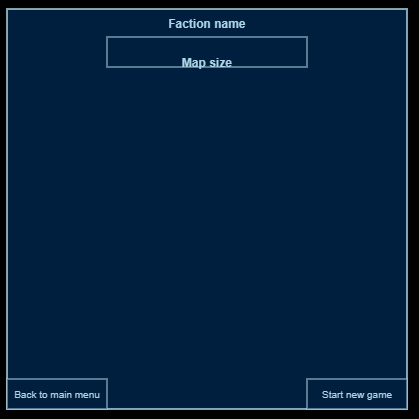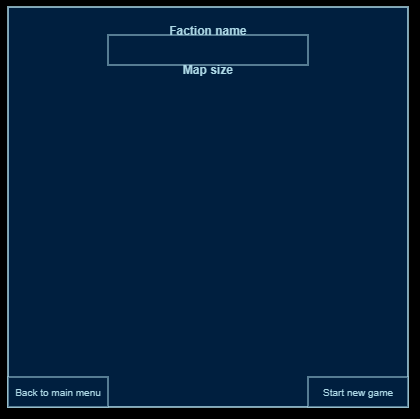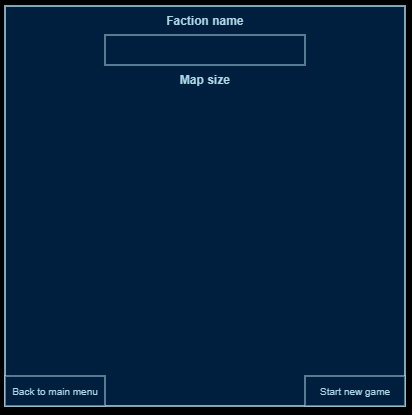Positioning TextBlock element on a Canvas element
One of the problems, which I faced recently when writing my own game engine in Javascript, is positioning a text element inside a container. As it turns out, drawing text using Canvas element seems a little bit more complicated than I anticipated and requires special care.
Disclaimer: This post is the first part of (hopefully!) a series of articles describing a process of writing a custom game engine.
Before we dive deeper into the topic, let’s introduce some context at first.
VerticalFlow element
When building a UI for a game, you need several different basic components like containers, buttons or tabs. Lots of those components can be nested, hence they have to be aware of their parents, siblings and children. As for now, we’re not going into details of positioning those components in general, but rather focus on one of available containers called VerticalFlow.
The definition of a VerticalFlow component is pretty straighforward:
A vertical flow container is a container that arranges its children vertically.
To make a long story short - when you want to ensure, that components are positioned vertically one by another, you need to introduce a component, which will take care of automated ordering and repositioning of its children. Visually, it could look like this:
+-Container----------+
| |
|--+-VerticalFlow-+--+
|--|--+-Child1-+--|--|
|--|--+-Child2-+--|--|
|--|--+-Child3-+--|--|
|--+--------------+--|
| |
| +-Child4-+ |
+--------------------+
In such container, positioning of child component is quite tricky - you need to reposition them after obtaining all coordinates from related components and make sure, that you still have access to the original position (i.e. before repositioning). Having the original position is the implication of both drawing methods using Canvas element (most of the time you need to draw from scratch each time UI becomes “dirty”), and the fact, that component may be relative to each other. However, as long as baseline for the components stays the same, the repositioning algorithm will stay pretty simple:
#repositionChildren() {
for(let i = 1; i < this.children.length; i++) {
const child = this.children[i];
const previousChild = this.children[i - 1];
child.y = previousChild.y + previousChild.height;
}
}
The whole repositioning operation happens of course after children are rebased using VerticalFlow component position. Unfortunately, the mentioned algorithm isn’t sufficient when we want to draw text as one of child components.
Problem visualized
Before introducing any modification to the algorithm, the UI containing 3 children (TextBlock, TextInput, TextBlock) will look like this:

CanvasRenderingContext2D and text baseline
As you may (or may not) be aware, CanvasRenderingContext2D (which is the drawing context you get when referencing a Canvas element in 2D) contains a property named textBaseline. This property specifies the origin from which a text is drawn meaning it affects positioning of a TextBlock element I’m working on. When looking at the screenshot above, you may notice a TextBlock element with a Map size text rendered within TextInput. Even though it looks like invalid placement, it’s actually correct when default value of textBaseline property is considered.
Let’s consider the following values (based on the discussed repositionChildren() algorithm):
- TextInput (x: 0, y: 500, height: 30)
- TextBlock (x: 0, y: 530, height: 11)
As you can see, TextBlock is rendered at the bottom of TextInput. The reason why it ends up within TextInput is simple - the y coordinate marks the origin for textBaseline, so with the default value of that property, the text is drawn “upwards”. Let’s try to fix that.
Setting proper baseline for text
When building a game engine, it’s important to set up proper anchors, which can help us during positioning of elements. Considering available options for the textBaseline property, the viable options are:
topbottom
Depending on our choice, the text will be render either down the origin (top) or up (bottom). The logical choice seems to be to have an anchor in top-left corner of an element, so let’s go for top. The result of setting that value is as below:

End result
In the end, after allowing to configure spacing between children of VerticalFlow component, the UI looks like this:

